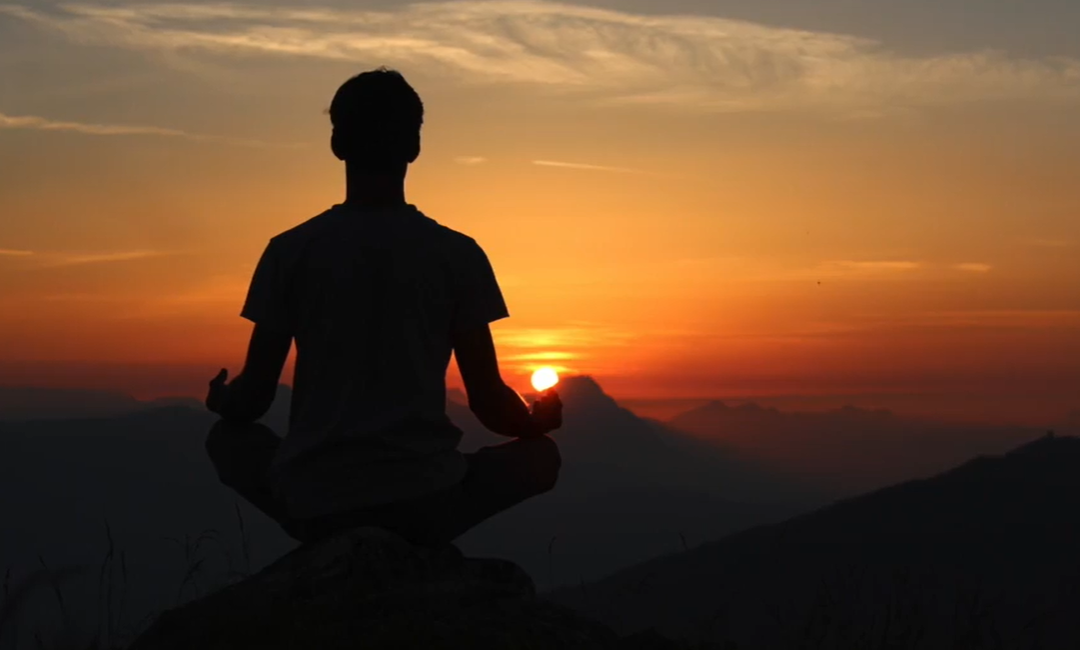Transcendental Meditation
The practice of transcendental meditation (TM) helps people stop thinking about things that are distracting and cultivate a relaxed awareness. The late Maharishi Mahesh Yogi originated TM from India’s illustrious Vedic culture. In the 1960s, he introduced the method to the United States.
Transcendental meditation entails silently repeating a mantra for 15- 20 minutes (or longer) in a serene, dimly lit space without any outside distractions or background music. Make sure your phone is off, or on quiet before you begin, and take precautions to ensure that no family members or pets will bother you while you are meditating. To make your meditation space more comfortable, you can also burn incense or light candles.
Steps:
Then perform transcendental meditation by doing the following: Place your hands on your lap and take a comfortable seat on the floor or on a chair. Close your eyes for about a minute, take a few deep breaths, and relax your body. Your eyes should remain closed during the 15- to 20-minute session.
Repeat a chant, Vedic mantra mentally while meditating. This might be a word or phrase you choose, a Sanskrit sound you learned from a meditation master, etc. This helps you concentrate.
Complete your attention on the mantra. Refocus your mind on the mantra if you notice that you are becoming distracted. After the session, open your eyes. Until you feel ready to stand up, continue to sit. Many people advocate meditating at least once a day, although you may wish to perform a session anytime you are feeling stressed throughout the day.
Supporters of TM claim that during meditation, normal thought is “transcended.” It is taken over by an awareness of only consciousness. The meditator reaches absolute quiet, rest, stability, order, and the absence of all mental barriers in this condition.
Learning and Practicing Transcendental Meditation
If you are beginning TM meditation for the first time you need to follow these steps: A certified instructor will go through a seven-step training program before teaching the TM technique so that you will be clearer.
During a 60-minute introductory lecture, a TM instructor gives general information regarding the method and its results. A second lecture lasting 45 minutes that provides greater detail follows that. The next step is for interested parties to go to a 10- to 15-minute interview and a 1- to 2-hour personal training session. They each receive a mantra after a brief ceremony, which they are instructed to keep private.
After that, there are three days of checking for accuracy and one or two more hours of instruction. The instructor performs the following during these sessions: more fully describes the procedure and offers any necessary adjustments. Provides details on the advantages of consistent practice. The teacher meets with students on a regular basis throughout the following few months to guarantee the proper technique. People spend 15 to 20 minutes each time they practice TM. That typically implies twice a day, once before breakfast and once before dinner. This can also be practiced right after you wake up in bed and just before going to bed. There is no demanding work involved in TM. Additionally, neither contemplation nor focus is necessary. Instead, teachers advise students to breathe properly and concentrate on the chant.
Contra-indication:
According to a few accounts, people who have specific psychiatric problems and meditate may have new or worsening symptoms. Before beginning TM, speak with your doctor if you have a current mental health condition. Tell your meditation teacher about your situation as well.
Benefits:
Regular meditation has been shown in certain studies to lessen chronic pain, anxiety, high blood pressure, cholesterol, and the need for medical services. There are several benefits of meditation. It releases your mental clutter and emotional knots. You will start experiencing bliss, harmony, and happiness within. When your mind is peaceful, immunity power will increase; thus you will have better health. Both TM and other kinds of meditation are generally secure and enhance a person’s quality of life. However, doctors concur that meditation shouldn’t be utilized in place of traditional medical care or as a stand-alone treatment for any specific health condition.
For more blogs visit on our Nepal Yoga Home blog section.
